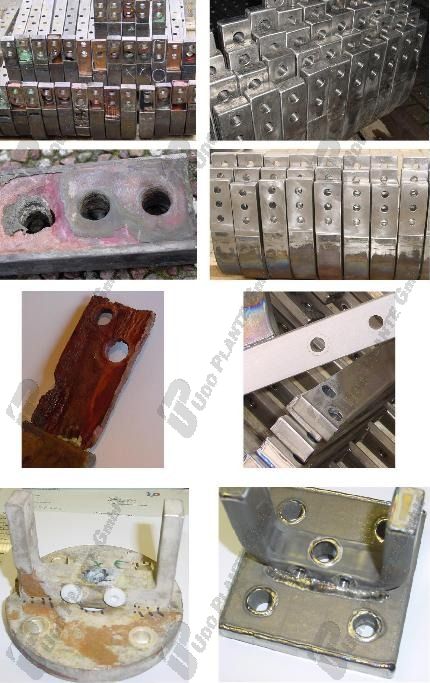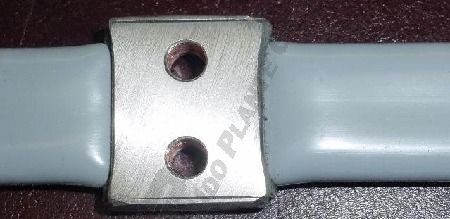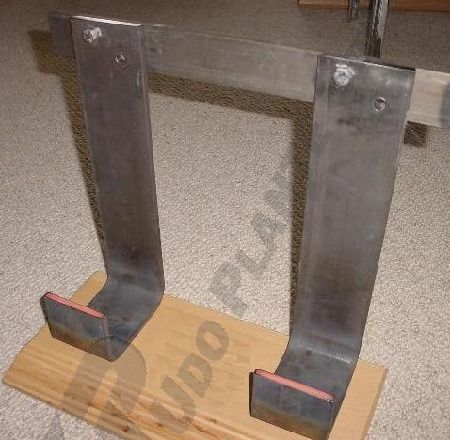The professional connection to the power supply is a constantly recurring question in dealing with titanium clad copper bars.
Electrical specialists often plead for the removal of the more poorly conducting titanium from the the contact surfaces.
In order to guarantee optimal current transfer, the connection surfaces are cleaned of titanium by milling or turning. This is a correct method with respect to the electrical conductivity of copper (58 mS) compared to titanium (2.2 mS).
This means that a copper wire with a length of 58 m and a cross section of one square millimeter has a resistance of one Ohm. With titanium the resistance of one Ohm is already achieved at a length of 2.2 m.
However practice shows that environmental influences must be taken into consideration.
When the contact surfaces are cleaned of titanium, the copper is now exposed to corrosive media like aggressive acids, steams and condensates in the galvanic treatment.
The copper then gradually corrodes resulting in point contact on the contact surfaces and bad current transfers.
in the past today

Due to these experiences the time-consuming and costly titanium bond is no longer removed with today’s connection techniques but used as high-quality corrosion protection.
What about the voltage drop and resistance?
If a voltage drop is calculated, then only the plating thickness of the titanium (0.5 – 2 mm) as the length is included in this calculation.
The result is a very low electrical resistance and from that follows a very low voltage drop. With a plating thickness of 0.5 mm the voltage drop is often only in the mV range.
The costs arising through this voltage drop are considerably lower than those arising through corrosion damage on uncovered connections at the TiCu Clad® current supplies of the anodes.




